Artificial recapitulation of the hierarchy of natural protein fibers is crucial to providing strategies for developing advanced fibrous materials. However, it is challenging due to the complexity of the natural environment. Inspired by the liquid crystalline spinning of spiders, we report the development of natural silk-like hierarchical […]
A lobster’s underbelly is lined with a thin, translucent membrane that is both stretchy and surprisingly tough. This marine under-armor, as MIT engineers reported in 2019, is made from the toughest known hydrogel in nature, which also happens to be highly flexible. This combination of strength and stretch helps shield a […]
Nature embraces an intriguing strategy to create high-performance biomaterials, such as spider silk which presents an unparalleled combination of stiffness, tensile strength, and toughness via hierarchical structures. However, to fabricate synthetic polymers with such excellent properties remains a challenging task. Inspired by the integration of multiblock backbone and densely H-bonding assemblies in spider silk as […]
Sutures pervade surgeries, but their performance is limited by the mechanical mismatch with tissues and the lack of advanced functionality. Existing modification strategies result in either deterioration of suture’s bulk properties or a weak coating susceptible to rupture or delamination. Inspired by tendon endotenon sheath, we report a versatile strategy to […]
Soft and flexible E-skin advances are a subset of soft robotics field where the soft morphology of human skin is mimicked. The number of prototypes that conformed the use of biological tissues within the structure of soft robots—to develop “Biohybrid Soft Robots”—has increased in the last decade. However, no research was […]
The global demand for clean and safe water will continue to grow well into the 21st century. Moving forward, the lack of access to clean water, which threatens human health and strains precious energy resources, will worsen as the climate changes. Therefore, future innovations that produce potable water from contaminated sources […]
Structures with variable stiffness have received increasing attention in the fields of robotics, aerospace, structural, and biomedical engineering. This is because they not only adapt to applied loads, but can also combine mutually exclusive properties. Here inspired by insect wings, the concept of “triple stiffness” is introduced and applied to engineering […]
The SIMPOL sensor concept was inspired by the degrees of freedom present in the stomatopod visual system. The compound eye of mantis shrimp contains spectrally selective and polarization-sensitive elements that are vertically stacked along a single optical axis. As light propagates into the stack, the mantis shrimp extracts spectral and polarization […]
A fish’s fins may be as sensitive to touch as fingertips
A fish’s fin has been found to be able to feel and detect textures similar to that of a human finger. This suggests that fish fins are not strictly motor structures, but it also plays some sensory role. Certain fish brush their fins against the sea floor, perhaps to detect changes […]
Ideal epidermal bioelectronics can be used not only for long‐term detection of physiological signals for disease diagnosis but also for chronic disease treatment. Silk, an animal‐derived fiber with good biocompatibility and skin‐affinity, is widely used in flexible bioelectronics. However, silk fibers are insulating. In this study, ultralong conductive silk microfibers (mSFs) are fabricated by extracting […]
Bats use topography and nocturnal updrafts to fly high and fast
O’Mara et al. use high-resolution GPS tracking and atmospheric models to show that, similar to diurnal birds, European free-tailed bats use uplifting winds generated by the nocturnal energy landscape to rapidly ascend over 1,600 m above ground level and achieve maximum self-powered airspeeds over 130 km/hour.
News, Lily the barn owl reveals how birds fly in gusty winds
Scientists have discovered how birds are able to fly in gusty conditions – findings that could inform the development of bio-inspired small-scale aircraft.
New research shows that patterns inspired by lobster shells can make 3D printed concrete stronger, to support more complex and creative architectural structures. The most conventional pattern used in 3D printing is unidirectional, where layers are laid down on top of each other in parallel lines. Previous […]
Learn about our two Decals!
 Click here to find out more about our Fall Bioinspired Design Decal and our Spring Bioinspired Design in Action Decal – ALL MAJORS are welcome.
Click here to find out more about our Fall Bioinspired Design Decal and our Spring Bioinspired Design in Action Decal – ALL MAJORS are welcome.Berkeley BioDesign Community
 Click here to learn about the BioD: Bio-Inspired Design @ Berkeley student organization or here to signup for more info.
Click here to learn about the BioD: Bio-Inspired Design @ Berkeley student organization or here to signup for more info.Search
Student Login

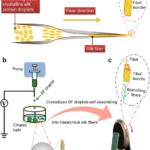
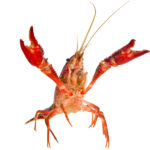

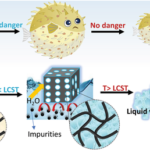
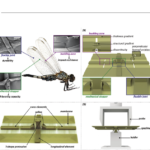

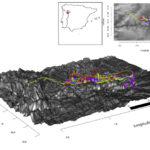

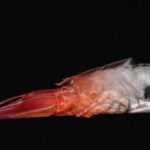


I imagine that the neurological circuits underlying these processes are governed by both 2d spacing maps with their brains as…
to reduce the impact of car accidents, it may be possible to study the force diverting physics of cockroaches to…
you see this type of head-bobbing stability in many avian creatures related to pigeons like chickens. the head ability to…
not like they taught horses how to run! this is an example of convergent evolution where both sea creatures and…
The brain functions in a similar way with neuronal connections. our brains are able to utilize the multiplicity of connections…